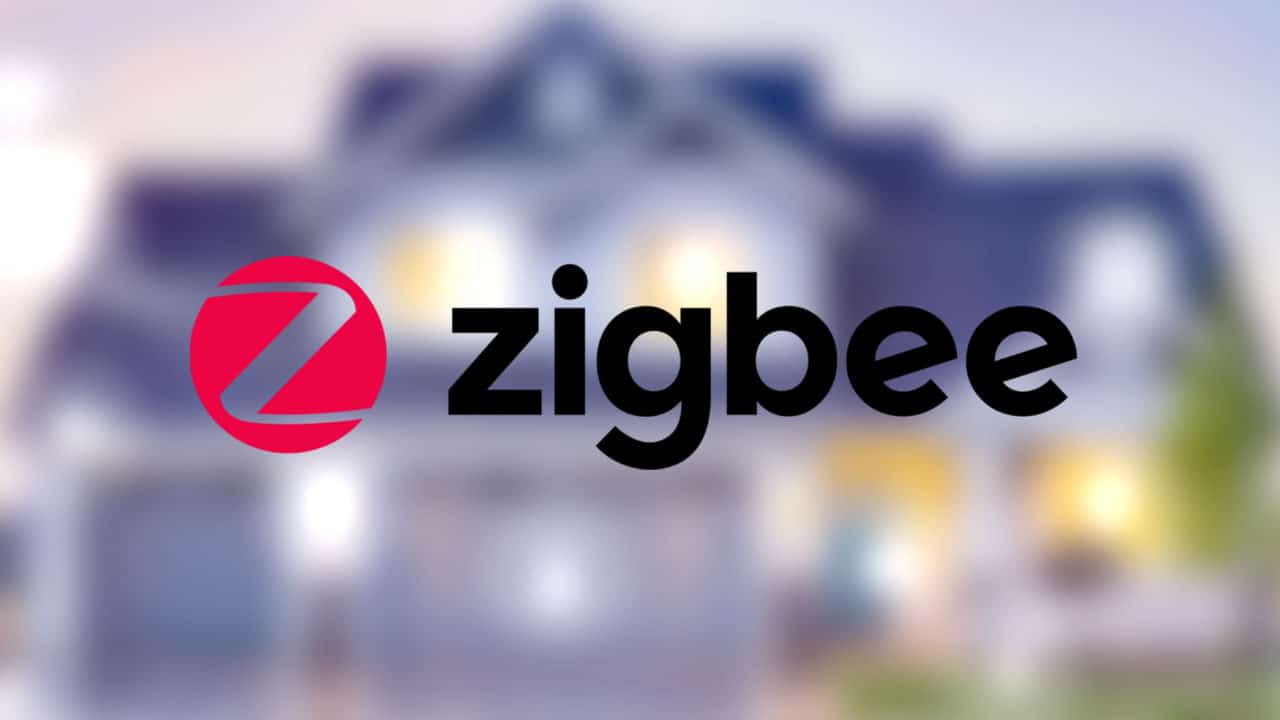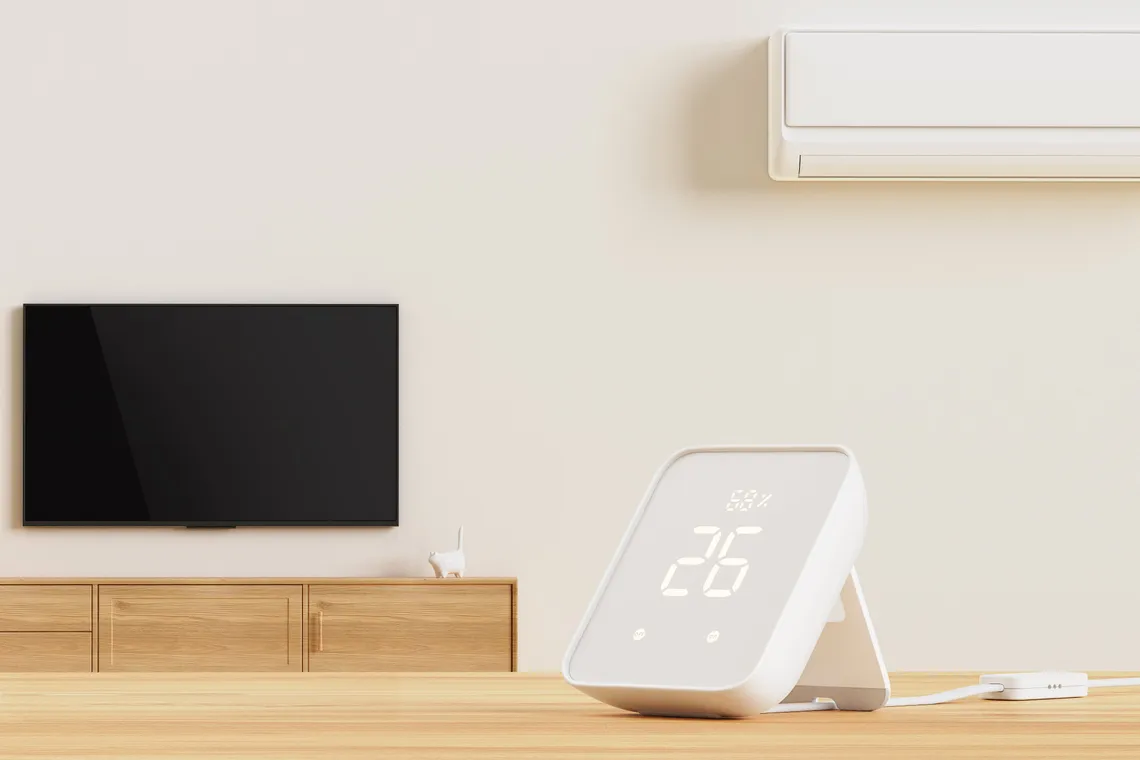Zigbee operates in a fundamentally simple way as a mesh network, but what does that even mean?
Zigbee-enabled devices communicate with a central hub rather than your WiFi network since they do not require a direct connection.
It is easy for signals to move between Zigbee devices on the network. When this occurs, it is mostly referred to as a hop. Even if you have a large home, Zigbee has a significant range of 65 feet, and the ability to hop between devices makes it one of the best protocols for any smart home.
A standard for 802.15.5 was created by the IEEE (Institute of Electrical and Electronics Engineers). This enabled the creation of low-power digital radio-based personal-area networks. This standard is used by Zigbee to create home automation systems.
Compared to other WPANs (wireless personal area networks) like Bluetooth, WiFi and Z-Wave, Zigbee is cheaper and simpler by design. This makes Zigbee the ideal communication medium between smart devices because it is low-speed and low-cost.
Zigbee is best suited to transferring smaller amounts of data, like instructions for how a device should behave. WiFi is capable of transferring large amounts of data at high speeds, but Zigbee takes the cake with much smaller amounts of information.
Several frequencies are available for Zigbee:
- 2.4GHz
- 868MHz
- 90MHz
Although the data transmission rate is only 250kbps (kilobits per second), it is considerably slower than the slowest WiFi connection, but that’s the whole point. In the case of sensors, for example, Zigbee provides the perfect solution.
In summary, Zigbee is perfect for low-speed data transfer applications that require long battery life.
Mesh networks are very effective, but what are they?
Mesh networks consist of nodes. Basically, each node functions like a small module.
A node functions similar to a wireless router by acting as a small transmitter able to exchange data with each other.
Due to Zigbee’s mesh networking capabilities, you’ll experience advanced data transmission and a general increase in signal stability. Even if one of the transmitters fails, the system will still function, making Zigbee a must-have protocol for your smart home.
The Zigbee network supports 65,000 nodes, all of which act as repeaters to assist with data distribution. Now you know where the term mesh network comes from.
A Brief Overview of Zigbee
Hopefully, you’re still alive after all the technical jargon has been cleared up. In this overview, we’ll provide you with a layman’s perspective of Zigbee based on six key categories:
- Security
- Network Configuration
- Power Requirements
- Signal Range
- Compatibility
- Dependability
Security
Much like Z-Wave, Zigbee networks utilize 128-bit symmetric security keys. Normally, banks use this encryption level to conduct their online operations. This tech is also prevalent in government agencies, so it is more than capable of securing the majority of smart homes.
Any home with a wireless connection is at risk of security breaches, but your Zigbee signal is unlikely to be affected.
Network Configuration
Rather than constantly communicating with the hub, devices function as repeaters as part of a mesh network – more on that shortly.
There is no limit to how many devices can be connected via Zigbee.
There is enough capacity in a Zigbee network to support up to 65,000 devices, which makes it large enough for use in commercial applications and with smart switches throughout. It is powerful enough to support even the biggest smart home.
Power Requirements
Bluetooth and WiFi use a lot of power, while Zigbee runs much smoother without sucking up massive amounts of energy.
The last thing you want is for your connected home to run on a communication protocol that drains your precious power. Due to its low power requirements, Zigbee makes an ideal choice for smart locks and sensors that can run for long periods of time on nothing but a battery.
Signal Range
You may need an outside signal depending on how your smart home is configured. People are now smartening up their homes, and home offices are more common than they used to be because there are more remote workers.
As far as signal range goes, Zigbee is more than adequate, but definitely not outstanding. Generally, ranges indoors are around 40 feet, but line of sight makes the difference. Furthermore, walls, fences, and other obstacles can interfere with Zigbee signals, leaving you with a surprisingly short range at times.
Why does this happen?
High frequencies have a hard time penetrating obstructions. It may be less stressful for WiFi to operate at 5GHz than at 2.4GHz, but may not be beneficial if your router is downstairs and you’re connected upstairs.
Zigbee isn’t the best option for massive smart homes, even though its disappointing reach isn’t generally problematic. But, it definitely is the most reliable for its features and price point
Compatibility
Over 2500 devices are Zigbee-ready thanks to the Zigbee Alliance – we’ll talk about that shortly.
Instead of hoping a Zigbee-ready device will be fully compliant, verify the Zigbee Home Automation Certificate to ensure the hardware and software are Zigbee compatible. If it doesn’t have the certification, it most likely will not work with your setup.
Dependability
If you want your smart home technology to function at its best, you need a completely reliable signal.
It can be annoying when a signal drops on certain non-essential devices. On the other hand, breaches involving security devices could cost you a shit ton of money. Consider the scenario of your water leak detector failing or even worse, your smoke detector and carbon monoxide detector. How about your smart door locks and security cameras? See where I am going with this? If you go skimp on the tech, it will end up screwing you over late and hit your wallet where it hurts.
With the right setup, Zigbee can provide reliable service for most reasonable applications.
Congestion is likely to occur when you rely totally on 2.4GHz frequencies. There is a possibility of dropped signals because your WiFi network, as well as most other devices, use the same frequency.
Zigbee Alliance
In 2002, Zigbee’s makers formed the Zigbee Alliance. There are now over 400 members and over 2500 devices that support Zigbee.
Zigbee membership is divided into three levels:
- Adopter
- Participant
- Promoter
By 2023, nearly 4 billion Zigbee chipsets will ship, making the Alliance’s growth continue and becoming the top protocol for smart home enthusiasts.
There are a lot of Zigbee hubs out there with tons of pros and cons. In another article, we will focus on our favorite 3 you should check out.
Final Thoughts
Hopefully, this brief overview of Zigbee has been useful and insightful for you. Your smart home won’t only consist of Zigbee devices, but, most of them definitely will be. So at least you have some knowledge on the subject.






